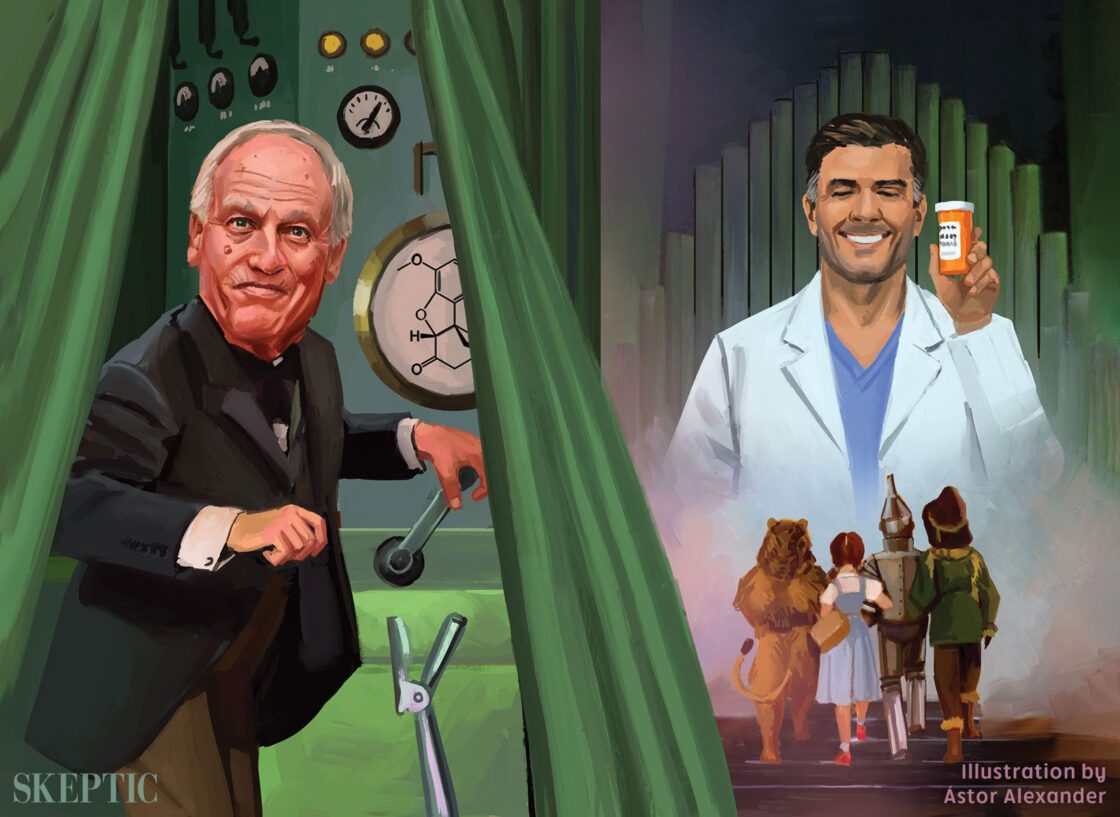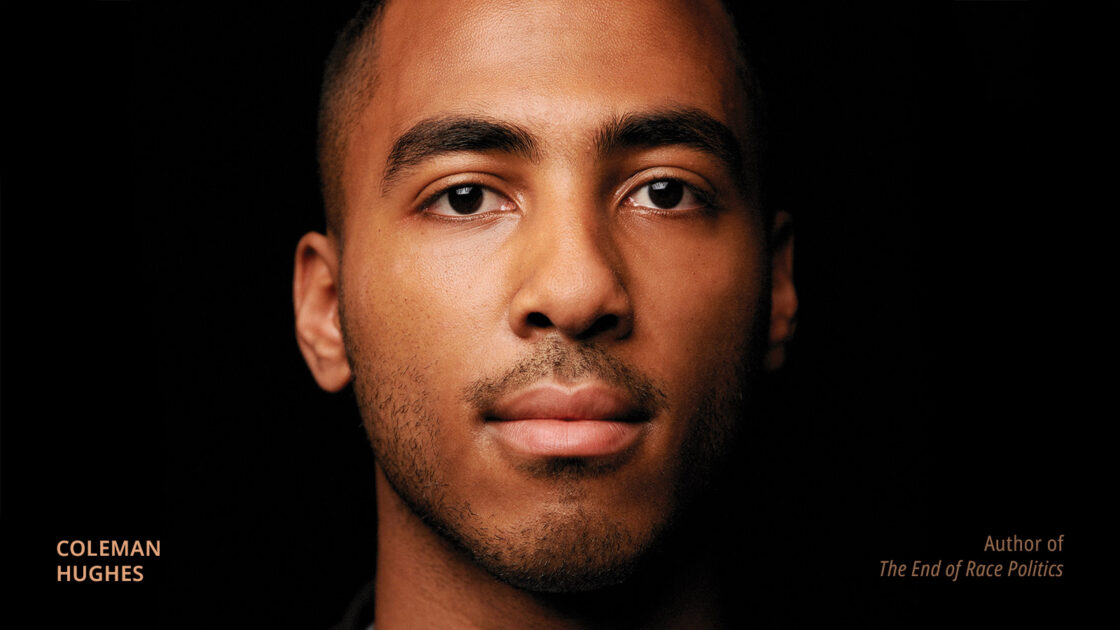Over the last six years, allegations of stolen elections and massive election fraud have proliferated in the United States.
While former President Donald Trump and his allies have been most responsible for this proliferation, it is certainly not a phenomenon limited to conservatives. Hillary Clinton still doesn’t accept the results of the 2016 election,1 and Democrats have spread election-related conspiracy theories in 2016 and 2020 as well.2
The significance of claims that the results of one election — let alone several — were fraudulent, cannot be overstated. In the United States, order depends on faith in its electoral system. Globally, and in the wake of 2020, we see what happens when citizens believe an election has been stolen: chaos, riots, and the potential collapse of political systems. That means the question of whether an election was stolen or rigged should demand the highest level of scrutiny and the highest degree of skepticism. It also means the answer is not only vitally important but also has many consequences.
When analyzing allegations of stolen elections or fraud, the biggest difficulty is that you are often trying to demonstrate to someone that a feeling they have is wrong, not that the evidence they have is lacking. As a reporter who has written a lot about claims of voter fraud (the corruption of a single vote, usually purported by one person acting alone) and election fraud (the systemic corruption of an election, usually through some pre-planned scheme), it often feels like trying to prove that aliens don’t exist. It’s not really about evidence, it’s about overcoming a belief someone has even when there is little or no evidence to support that belief. Put differently, proving that aliens do exist — like proving that the 2020 or 2016 election was stolen — is difficult because there is so little evidence for it. The burden of proof must be upon the asserter.
Still, that’s not to say voter and election fraud claims can’t be analyzed. On the contrary, many specific allegations which offer purported evidence have been presented over the last six years. However rare, election fraud and voter fraud do occur, and have been alleged, investigated, and prosecuted even within the last few years.3 However, many of the allegations that have become the most popular have been sufficiently investigated and, upon the basis of the evidence, disproven.4 Meanwhile, the fraud we know about— the fraud for which there is solid evidence — doesn’t come remotely close to being sufficient to have changed the results of any recent presidential election.5
Russia, Russia, Russia
The 2016 election was unlike any others in recent memory. Most notably, it was marred by allegations of “Russian interference,” including the leaking of internal communications from Hillary Clinton’s campaign team — an unprecedented breach of accepted presidential electoral ethics.6
It should be said explicitly the hack of the Democratic National Committee was very real, as were the documents published by WikiLeaks. While elements of it were a tad bit rudimentary — for example that of a Hillary Clinton campaign chairperson John Podesta’s assistant falling for a spear-phishing email (that is, a fraudulent email sent ostensibly from a known or trusted sender in order to induce targeted individuals to reveal confidential information) to reset his password7 — the fervor over all of it led to some rather bizarre and unfounded allegations. Perhaps one of the most prominent was the idea that Russia actually hacked into U.S. voting systems in order to help Trump.
This claim was, in part, popularized by former Clinton advisor and now Joe Biden senior advisor Neera Tanden.8 In the weeks after Trump’s victory, Tanden repeatedly called on electors to ignore their states’ votes and refuse to elect Trump as president.9 She insisted Clinton only lost the election because Russia “did enough damage to affect 70,000 votes in three states.” And, perhaps most critically, she repeatedly suggested that Russian hackers changed actual vote tallies in the election.10
In fact, there is no evidence that any Russian hackers ever changed a single vote in the 2016 election. In Robert Mueller’s sweeping indictment of Russian intelligence agents, he never even alleged U.S. voting machines were ever compromised — let alone produced evidence of such. Rather, Russia’s role in the 2016 election amounted almost entirely to the dissemination of some real and damaging information, as well as the spreading of disinformation and the organization of fake political meetups.11 Unfortunately, misleading headlines about these hacks led many voters to believe otherwise. In May of 2019, National Public Radio (NPR) published a piece headlined “Florida Governor Says Russian Hackers Breached 2 Counties in 2016.” However, in the body of the piece, the reporter emphasized that “no data were tampered with and vote tallies were not affected.” While specific Florida counties weren’t named, officials also said the data accessed by the hackers were already publicly available.12
Nonetheless, that false claim enjoyed a life of its own. Shortly after the 2016 election, 67 percent of Democrats reported believing that it’s “definitely true” or “probably true” that Russia tampered with votes in order to help elect Trump.13
Democrat Allegations of Fraud in 2020
In 2020, while Donald Trump began spreading his election fraud conspiracy claims, Democrats briefly latched onto conspiracy theories of their own. First, rumors persisted online that 300,000 ballots for Democrats had “gone missing.”14 This claim originated when some online sleuths were trying to understand why hundreds of thousands of ballots had not been scanned for delivery. It turned out that USPS workers were manually postmarking the ballots15 and delivering them quickly, without scanning them into the system. Before reporters made that information clear, however, the theory that hundreds of thousands of ballots had gone missing due to a corrupt USPS being run by a hand-picked Trump appointee was going viral.
After the 2016 election, 67% of Democrats reported believing that it’s “definitely true” or “probably true” that Russia tampered with votes in order to help elect Trump.
In another instance from the 2020 election, a progressive Twitter user attempted to frame the results in Kentucky as rigged, arguing that Senate Majority Leader Mitch McConnell had facilitated a stolen election.16 “The GOP seem to have used ‘a bag of tricks’ to mess with the results,” Allison Greene tweeted. “It’s a combination of things that includes somehow getting more Republican votes then there are Republican voters, significant absentee votes not being counted, suppressing the Vote in key Democrat counties.”
Greene came to these conclusions by making claims such as, “Ballard County Kentucky the State Board of Elections shows 2285 registered REPUBLICAN voters as of Oct 2020 yet 3155 people voted for Mitch McConnell?” The progressive website DailyKos republished her claims17 and her thread was shared more than 13,000 times as of this writing, likely seen by millions of users.
However, her Twitter thread was filled with misconceptions. Greene was making basic mistakes, such as misreading voter registration files or misunderstanding Kentucky politics (and assuming no Democrat would vote for McConnell). As elections reporter Grace Panetta put it:
This thread is proof that harmful election conspiracy theories are by no means limited to the right. Especially in a place like Kentucky, people don’t vote perfectly in line with their party registration, ticket-splitting is common, and there are voters who aren’t registered with either party.
None of Greene’s claims ever held up to scrutiny. They were immediately refuted by Kentucky voters who replied to her tweet, and thoroughly debunked in the comments sections of articles like the one posted by Daily Kos.18 Yet the narrative persisted and Greene never replied to her critics. She continues to make those claims today in publications such as D.C. Report.19
Of course, in 2020, that was just the beginning.
Trump’s Big Lie
One of the first viral claims was that thousands of votes had been “dropped” in the “middle of the night” by Democrats in states like Michigan and Wisconsin to overcome Donald Trump’s early lead.20 These votes supposedly evaded detection from Republican poll watchers at every poll in every swing state and were then counted and illegally added to the Democrats’ tally.
For those of us who reported on the election, however, we know the late surge from Biden was quite predictable. In fact, I reported this weeks before the election, because in most swing states mail-in ballots were going to be tabulated last. Two days before the election, BBC News explained:21
Early tallies may be deceptive. This is due in part to more differences between states in reporting. Some states, like Florida and Arizona, begin pre-processing ballots weeks before November 3rd. Others, like Wisconsin and Pennsylvania, won’t touch these votes until election day, meaning they’ll likely be slower to count…. In some states, ballots cast in person on election day will be counted first. These counts are expected to favour Mr Trump, as his supporters are expected to be more likely to vote on the day.
Since mail-in ballots were predominantly coming from Democratic voters, who were more fearful of COVID-19 and more encouraged by their preferred candidates to vote by mail, it was obvious that the votes counted last were going to disproportionately favor Biden. This was especially relevant given that Trump repeatedly told supporters that mail-in voting was unreliable.
So, the fact that some people went to bed when Trump was ahead and woke up (after the mail-in ballots were counted) to find Biden leading should not have been surprising. It played out exactly as reporters and election experts expected it would. It should be noted, also, that the only reason this happened was that Republicans in states such as Wisconsin and Pennsylvania refused to tally, process, and count mail-in votes before Election Day.
You may have noticed that in Florida and Ohio, where elections are also run by Republicans, we did not have allegations of votes being “dumped” to favor Biden. That is probably, in part, due to the fact that Trump won those states. But it’s mostly because those Republicans passed bills to allow mail-in votes to be processed and counted before election day.22
Dead Voters
Another common voter and election fraud allegation from 2020 was the claim of “dead people voting.” More precisely, this is the allegation that dead people’s ballots were being stolen and cast without detection. This allegation is harder to parse in a broad way because the ways by which states ensure votes are legally cast vary. Nonetheless, we can look at some specific allegations made by Donald Trump. Consider, for instance, his claim that “at least” 5,000 dead people voted in Georgia’s presidential election in 2020.23
These claims started almost immediately after the election when President Trump’s team claimed four “dead people” had their ballots cast: Linda Kesler, Deborah Jean Christiansen, James Blalock, and Edward Skwiot.24 It began with a series of viral internet posts and that was amplified by Fox News host Tucker Carlson, who did an entire segment on the purported dead voters. “Mr. James Blalock of Covington, Georgia, a World War II veteran, voted in the election,” read one of the posts. “The only problem? He passed away 14 years ago, in January 2006. Sadly, Mr. Blalock is a victim of voter fraud.” However, it became apparent to investigators that three of the four, including Blalock, did not actually have their ballots cast:
Linda Kesler died in 2003 and didn’t vote — but Lynda Kesler, a nearly identical name but a person with a different address, birthday and zip code — did vote. Similarly, Deborah Jean Christiansen voted in 2018, died in 2019, and had her registration canceled before the election (voter rolls are regularly matched with death records and then updated). However, a woman with the same name born in the same year, but with a different birthday and social security number, did vote in 2020. Finally, James Blalock, who died in 2006, was purged from the voter rolls that year. But in 2020, his widow voted under the name “Mrs. James E Blalock Jr.,” which she did even when her husband was alive.
As it turns out, Edward Skwiot did have his ballot cast, despite dying in 2015.25 Skwiot’s vote was illegally cast in a county where 6,000 of the 7,327 votes were cast for Trump. In total, Georgia officials have found four voters who had died but whose ballots were cast in 202026 — despite the fact Trump alleged “at least” 5,000 dead people’s votes were cast. These few “phantom” voters were discovered after election officials investigated allegations from the public.27
In each of those four cases, the ballots were not enmeshed in some vast Democratic conspiracy to overturn the election, but were cast by family members of the deceased, according to sworn testimony from Republican Secretary of State Brad Raffensperger. In most cases, election officials find that dead people’s ballots being cast are from family members who purport to know how the person in whose name they voted would have wanted to vote, and so justified their illegal action that way.28
How do we know more dead people aren’t voting? Every state has different rules, but since so many of the dead people voting allegations were in Georgia, we can discuss specifics there.
First, the only way a dead person’s ballot could be cast is by absentee voting. The first step toward getting an absentee ballot is requesting an application. It’s worth noting here that because of COVID-19, mail-in and absentee voting proliferated across the country. Many Americans were sent absentee ballot applications in 2020 for the first time, and confused them for actual ballots, thus helping to spread the rumor that dead people were being sent ballots. It’s legal for voting groups to send out applications to people without requests, and many groups do so in order to ramp up voter participation. Even so, only one single ballot can actually be requested and can be cast by a legal, living voter.
In Florida and Ohio, where elections are also run by Republicans, we did not have allegations of votes being “dumped” to favor Biden. That is probably, in part, due to the fact that Trump won those states.
In Georgia, in order to receive that ballot, a person must send in an application with voter information that identifies them by name, date of birth, and either Social Security Number or Driver’s License Number. When that application is sent in, the person must sign it, affirming they are who they say they are (under penalty of prosecution), and their signature is matched against a signature that Georgia has on file. If the person is approved for a ballot, they will receive it by mail. They then have to vote, and have to sign it again (with this signature also matched against the one on file). Moreover, once your ballot is cast, it is still subject to an audit.
At each one of these steps, Georgia election officials use voter rolls to ensure that each vote is legitimate. Voter roll maintenance happens in every state, but as it is directly related to deaths, states use various methods to ensure voters on their rolls are still alive: They check state death records, obituaries, vital records and/or Social Security data. Six states receive updates from the state health department every month on who has died. Most states have “inactive voter” lists — that is, voters who aren’t voting — and purge those voters from the rolls.29
Recounts and Election Audits
There are additional reasons for confidence in the voting system: First, the reason you heard about claims of dead people voting in Georgia is that Georgia voter rolls are public — meaning anyone can investigate whether a person voted who is also dead.30 While this allows a lot of inexperienced online sleuths to make erroneous claims about voter fraud, it also allows campaigns, journalists, and investigators to scrutinize those allegations. Further, it makes it extremely unlikely that any huge irregularities would get past election officials, investigators, campaigns, journalists, and the public.
In 2020, Georgia also performed a “risk-limiting audit” (RLA). This is a process where investigators pull a sample of ballots from the state for close inspection, and then extrapolate to the entire election based on that investigation. Ballots are chosen for audit by rolling twenty 10-sided dice, which produce random numbers that are input into risk-limiting software. The results inform counties as to which ballots to pull and where, until enough ballots are pulled to form a statistically representative sample.31
Georgia also performed a full hand recount of millions of voters to ensure there wasn’t any machine error. The state also performed signature matching audits, which would turn up all kinds of fraud — from organized election interference to dead people voting.
All of the results of these audits indicate that votes had been tabulated fairly.
For instance, Trump and his team levied many allegations about Cobb County, Georgia. So investigators pulled 15,118 absentee ballot envelopes from 30 randomly-selected boxes. There were a total of 150,431 absentee ballots returned in Cobb County, so the sample was large enough to produce representative results, with a 99% confidence level and a one percent margin of error.32 Investigators formed 18 two-member teams to look at voter signatures, and compare them to voter registration forms, absentee ballot applications, passports, and other government documents.
Collectively, the investigators found 396 questionable signatures on ballot envelopes. All but 10 were accepted as valid, and then voters were contacted and given the opportunity to verify those ballots. There were zero cases of fraud in the entire batch.
Meanwhile, county-by-county results of the RLA are also live and accessible to the public on Georgia Secretary of State’s website.33
Given that nearly every swing state conducted hand recounts and audits in close races, any machine error would have immediately been caught by auditors — as it was in two counties in Michigan and Georgia. (In both cases, it was human error — not corrupted software — that caused the miscount).34
Curing Ballots
As it happens, the transparency of the 2020 election itself is part of what created such controversy. In many polling stations, there were livestreams of the ballots being sorted and counted. There were security cameras at drop boxes and nonstop news coverage of any allegation of fraud across the country. In several instances, this transparency actually resulted in people misunderstanding typical election procedures as something more nefarious.
In one example, President Trump shared a video where election workers were curing ballots, and raised the prospect that they were actually illegally filling out ballots. Ballot curing happens when a machine fails to read a ballot someone submitted — usually because a person filled in a bubble outside the lines, tried to correct a mistake, or accidentally marked the paper somewhere and so confused the scanner.
In this process, two election workers sit across from each other, one with the invalid ballots and the other with a new ballot. If they can, they “cure” the ballot by recreating the voter’s intended vote and putting it back through the machine. This process is overseen by poll watchers (an even number of Republicans and Democrats) and is only performed on ballots where the intent of a voter is clear. The remade ballot is then attached to the original ballot that had readability problems so that the vote can be audited after the election.35
Since we had live access to many polling stations, some Americans unfamiliar with the process saw ballot curing taking place — again, out in the open, under the watch of poll watchers and on live streams of polling places — and erroneously believed they were witnessing vote fraud.
Similarly, ballots are often sorted at polling stations. Given that some more populous counties handle tens or hundreds of thousands of ballots, the process can be laborious. In one video from the 2020 election, a poll worker threw out instructions that were inside a ballot while being filmed. Voters who witnessed this process online believed that votes were being thrown out in front of their eyes. What they really were witnessing was just a normal part of the sorting process before votes are opened and counted. Sadly, the election worker in question had to go into hiding and his boss had to go on the nightly news to clear his name.36
Perhaps one of the most popular allegations from the 2020 election was the claim that Dominion Voting Systems had corrupted machines that would somehow switch votes from Trump to Biden. President Trump himself helped popularize this claim after the election when he tweeted:
REPORT: DOMINION DELETED 2.7 MILLION TRUMP VOTES NATIONWIDE. DATA ANALYSIS FINDS 221,000 PENNSYLVANIA VOTES SWITCHED FROM PRESIDENT TRUMP TO BIDEN. 941,000 TRUMP VOTES DELETED. STATES USING DOMINION VOTING SYSTEMS SWITCHED 435,000 VOTES FROM TRUMP TO BIDEN.
This allegation was first made by One America News Network, who published a report saying “an unaudited analysis of data obtained from Edison Research, states using Dominion Voting Systems may have switched as many as 435,000 votes from President Trump to Joe Biden. And the author also finds another 2.7 million Trump votes appear to have been deleted by Dominion, including almost 1 million Trump votes in Pennsylvania alone.”
However, when reporters reached out to Edison Research about this claim, they responded unequivocally: “Edison Research created no such report and we are not aware of any voter fraud,” President Larry Rosin said.37 It was a “game of telephone” going all the way back to the source, who then denied even making the initial allegation. The claim was, literally, concocted out of thin air.
As we learned from investigations into January 6, even Trump-affiliated lawyers such as Sidney Powell never actually obtained evidence of Dominion Voting machines corrupting the vote, despite the fact they claimed that evidence was forthcoming. Trump eventually dropped Powell, and text messages subpoenaed by the January 6 committee show Trump’s chief of staff and allies discussing privately the fact Powell never showed them any evidence of Dominion voting machines helping facilitate fraud, despite claiming otherwise publicly.38 Dominion is now successfully advancing a defamation lawsuit against Powell and conservative news networks who elevated her claims, and allegations of Dominion switching votes have all but disappeared. President Trump does not even make these allegations anymore.
2000 Mules
The most recent popularized story of voter fraud comes from Dinesh D’Souza in his film 2000 Mules, in which he claims that hundreds of thousands of illegal votes were cast by at least 2,000 people — and as many as 50,000 — who were operating across major swing states in order to stuff drop boxes with illegal ballots to help Biden win.
D’Souza’s evidence for these claims consists of GPS cell phone-tracking data purchased by his team, which allegedly shows 2,000 mules repeatedly passing by drop boxes and the offices of political organizations leading up to the 2020 election. In his analysis, for the period from October 1, 2020 to election day, D’Souza isolated every person who passed or stopped at 10 or more drop boxes in a day, and every person who passed or stopped at five or more nonprofit organizations tied to political entities. Using these criteria, he claims to have found over 2,000 people across several Democratic strongholds in swing states, mainly Philadelphia and Atlanta. These “2000 mules” are then credited with delivering hundreds of thousands of ballots that threw the election to Biden.
Along with the cell phone data, D’Souza shows various clips from security footage of people dropping off ballots late at night, taking photos of the ballot box after they’ve submitted them, or wearing gloves when they drop the ballots off — all of which is supposed to create suspicion that the voters were doing something illegal.
I’ve published an entire 8,000-word piece examining the claims in D’Souza’s film, which do not hold up under scrutiny.39 Among the many issues with his film, the main problems are:
First, D’Souza never once in the film concedes that the Georgia Bureau of Investigations (GBI) actually looked into a few of the so-called mules, and found that all of the ones they investigated were turning in legal ballots for family members. In Georgia, it is legal to drop off ballots for family members, people who are disabled, or people in your care. Several of the people featured in D’Souza’s film were investigated by the GBI and found to be casting legal ballots, yet D’Souza never informs his viewers of this fact. The GBI has requested more information from the producers of the 2,000 Mules film about the purported scheme, but they have so far declined to cooperate.40
Second, D’Souza (and his team) alleged repeatedly that these “mules” were making several stops at several drop boxes in the same day. That is the entire premise of their geo-tracking cell phone data. Nowhere in the movie, however, do they show the same “mule” twice. When pressed on this point, D’Souza — to his credit — produced still images of one person visiting a ballot box on two separate days. That would be easily explainable if the person was, as it appears, some kind of health care worker turning in ballots for people in his care or turning in ballots for family members on two separate days. Still, the person is not at the same ballot box on the same day, which — again — is the entire premise of D’Souza’s film.
This leads to the other, more obvious reasons to question its claim. Why would a vast conspiracy of political operatives use drop boxes to commit their scheme? Absentee ballots in Georgia can be submitted by mail, and by using drop boxes the schemers would allow themselves to be seen on security camera footage when they could have just mailed in the ballots or dropped them off at a post office.
Further, where are the witnesses? D’Souza claims as many as 50,000 mules participated in this scheme and were likely paid off by Democrats. Yet not a single whistleblower or witness has come forward. In election fraud cases that have been prosecuted in recent years, members of politicians’ own staff often testify against them, even in cases where they are incriminating themselves. D’Souza purports to have the cell phone data on over 2,000 criminals, but his team hasn’t been able to identify even a single one of them to authorities. Nor has a single one come forward or confessed on tape, in a text message, or in an email to a friend. None have been outed by family members or colleagues who they confided in.
Simply put: Where are the mules? Where is the smoking gun?
Victor Reynolds, the director of the Georgia Bureau of Investigations, looked into some of these claims. In a letter to the chairman of the Georgia Republican Party on Sept. 30, 2021, he wrote: “Saliently, it has been stated that there is ‘a source’ that can validate ballot harvesting. Despite repeated requests that source has not been provided to either the GBI or to the FBI.”
Finally, the actual geo-tracking data at the center of their allegations is a questionable foundation on which to build. While D’Souza mostly used general terms such as “GPS data” to describe what he purchased, the data expert in the film, Gregg Phillips, told investigators that the data they bought was Cell Site Location Information — that is, CSLI data. Historical CSLI data cannot track someone’s movements within three-to-five foot accuracy, as D’Souza has claimed. In reality, there is no way to pinpoint a cellphone’s precise geographic location from CSLI data and no known validation methods or error rates for the methodologies used to collect that data.41
Given that there are political nonprofits and drop boxes placed all across cities like Atlanta and Philadelphia, the place where the creators of 2,000 Mules focused their attention, data showing people coming near those locations is actually an invalid metric for proving some kind of illicit election fraud scheme.
Even More Allegations of Fraud
These allegations are just the tip of the iceberg of what has been alleged in the 2020 and 2016 elections. Others include claims such as three to five million undocumented immigrants voting, or fake ballots being printed and used, or statistical anomalies that make it impossible for Biden to have won, or ballots cast outnumbering registered voters. In every one of these allegations, similar logical fallacies, misunderstandings or falsehoods are at the core of the story — not actual evidence of voter or election fraud. Passage of time and accumulation of evidence have only reinforced that null hypothesis.
In July of 2022, perhaps the most damning, expansive, and conclusive report analyzing these claims was published. It was the work of a group of conservatives — eight prominent former attorneys general, judges, Republican senators, and Republican-appointed officials. They examined all 64 cases of election fraud Trump and his legal team tried to file in court, and then issued a 72-page report on the details and outcomes of those cases.42
In total, the group found 20 of those cases were dismissed before a hearing on the merits, 14 were voluntarily dismissed by Trump and his allies before a hearing on the merits, 30 were dismissed that included a hearing on the merits, leaving only one case involving far too few votes to impact the election in which Trump’s team did prevail in Pennsylvania. It was a case about a voter ID deadline, not election fraud.43
In all, 22 federal judges appointed by Republican Presidents, including 10 appointed by Trump himself and at least 24 elected or appointed Republican state judges, dismissed the President’s claims.44 At least 11 lawyers have been referred for disciplinary proceedings due to bad faith and baseless efforts to undermine the outcome of the 2020 Presidential election. Several prominent conservative news outlets and magazines have had to issue retractions.45
One Trump-appointed judge said of the allegations: “Charges require specific allegations and proof. We have neither here.”46
Another Trump-appointed judge warned that if cases like these succeeded, “Any disappointed loser in a Presidential election able to hire a team of clever lawyers could flag claimed deviations from election results and cast doubt on election results.”47
As President Trump’s own former attorney general William Barr put it to investigators, after examining evidence with the full power of the Justice Department, he believes the claims of election fraud were “bullshit,” “complete nonsense,” and “a great, great disservice to the country.” He went on that Trump is “detached from reality” if he believes them.48
Over time, the claim that the 2020 election was “stolen” has taken on different meaning to different people.
While voter fraud and election fraud cases have been prosecuted in recent years, nearly two years after the 2020 election there is still no credible evidence that the race was stolen — just as six years after the 2016 election we still know Donald Trump won that race fairly. No court has validated a stolen election in 2020, no claim has withstood scrutiny from election experts, and yet each time an allegation is disproven another one emerges, which is how we went from Dominion Voting Systems to 2000 Mules.
Was It All Above Board?
Over time, the claim that the 2020 election was “stolen” has taken on different meaning to different people. Some supporters of former President Trump have attached themselves to many of the allegations above, which — as demonstrated above — don’t contain any merit.
Others, though, have used the word “stolen” to imply something different: That the election was unfair — that the deck was stacked against Trump. Rather than argue that “mules” stole the election or voting machines flipped ballots or election workers rigged races, this claim carries a bit more nuance.
In this telling, the unfairness of the 2020 race is about a combination of legal but unusual factors: the suppression of the Hunter Biden scandal story, the banishing of high-profile Trump supporters from major social media platforms, the rapid and unprecedented expansion of mail-in voting access (which benefits Democratic candidates), and the hundreds of millions of dollars provided by wealthy liberals such as Mark Zuckerberg to fund the facilitation of elections in predominantly Democratic districts.
If there is an argument that the 2020 election was unfair, these angles certainly carry more weight than the ones that preceded them. Yet, are they anything more than somewhat aged and more sophisticated sour grapes?
Among many other excuses, Hillary Clinton blamed her 2016 loss on then-FBI Director James Comey’s decision to announce a reopening of the investigation into her email scandal just weeks before voters cast their ballots. Some pollsters have demonstrated a statistically significant drop in Clinton’s support immediately following that announcement. It was highly unusual, and Comey is a registered Republican. On top of that, WikiLeaks did actually disseminate DNC emails, which really were hacked in an effort to damage her. If you believe the 2020 election was stolen from Trump, it might be worth considering that such an allegation sounds a lot like Clinton’s claims the 2016 election was stolen from her — not because the vote was compromised, but because her campaign was hurt by a series of extraordinary events.

This article appeared in Skeptic magazine 27.4
Buy print edition
Buy digital edition
Subscribe to print edition
Subscribe to digital edition
Download our app
What’s critical in all this is to separate the wheat from the chaff. The burden of proof rests on those who claim the 2020 election was marred by widespread election fraud, committed in some sort of vast, Democrat-run conspiracy. So far, the claimants haven’t come close to supporting such an allegation, and the evidence they’ve tried to bring forward dissolved under even slightest mild scrutiny.
For Americans of all stripes, that should first and foremost be encouraging. In nearly every election of recent memory, the losing side has alleged a range of shenanigans. No elections are perfect, and fraud is not as uncommon as some want you to believe. Nonetheless, America’s political process thrives because citizens and politicians are able to view the evidence, trust the checks and balances, and move forward as a single nation. If the last election had been truly rigged, if such evidence did exist, it would be a calamity.
That is what makes this exercise frightening. It’s encouraging that we can have confidence in the result of the 2020 election. Yet it’s frightening that such flimsy allegations captured such a massive and gullible audience. And it’s worrisome that, with such little evidence to support those claims, articles like this remain necessary. ![]()
About the Author
Isaac Saul is the founder of Tangle News, an independent, non-partisan, subscriber-supported newsletter that summarizes the best arguments from the right and left on the big debates of the day.
References
- https://wapo.st/3Ct2jUs
- https://bit.ly/3VwMF3p
- Fund, John. (2004). Stealing Elections: How Voter Fraud Threatens Our Democracy. Encounter Books.
- https://bit.ly/3VmWHDO
- Danforth, J., Ginsberg, B., Griffith, T., Hoppe, David., Luttig, M., McConnell, M., Olson, T., Smith, G., (2022). Lost, Not Stolen: The Conservative Case that Trump Lost and Biden Won the 2020 Presidential Election.
- Mueller, R. (2016). Report on the Investigation Into Russian Interference in the 2016 Presidential Election. Vol 1 of 2. Department of Justice.
- https://wapo.st/3EvTBri
- https://bit.ly/3VwMF3p
- Ibid.
- Ibid.
- Mueller, R. (2016). Report on the Investigation Into Russian Interference in the 2016 Presidential Election. Vol 1 of 2. Department of Justice.
- https://n.pr/3Cqstar
- https://washex.am/3Ct6Cz6
- https://bit.ly/3euuNVT
- https://bit.ly/3ywKtyK
- https://bit.ly/3Vl3huQ
- https://bit.ly/3RT1UQU
- Ibid.
- https://bit.ly/3T6zzYE
- https://wapo.st/3yxwqJt
- https://bbc.in/3yxn68o
- https://bit.ly/3EzaPUM
- https://bit.ly/3MrNgPK
- https://bit.ly/3fOPc8s
- Ibid.
- https://bit.ly/3Mmfhbf
- https://bit.ly/3MonnA8
- https://bit.ly/3fSQX4t
- https://bit.ly/3Eztm32
- https://bit.ly/3yzEIQO
- The Georgia Risk-Limiting Audit/Hand Tally: A Carter Center Observation Report. (2020). The Carter Center.
- https://bit.ly/3SS960Y
- https://bit.ly/3g4fMuE
- https://bloom.bg/3TcCVcl
- Ibid.
- https://bit.ly/3ffZC0U
- https://bit.ly/3g25bQR
- https://on.msnbc.com/3rNOR8J
- https://bit.ly/3TiCGwF
- Ibid.
- Saxe, V. Junk Evidence: A Call to Scrutinize Historical Cell Site Location Evidence. (2020). The University of New Hampshire Law Review, 133.
- Danforth, J., Ginsberg, B., Griffith, T., Hoppe, David., Luttig, M., McConnell, M., Olson, T., Smith, G., (2022). Lost, Not Stolen: The Conservative Case that Trump Lost and Biden Won the 2020 Presidential Election.
- Ibid.
- Ibid.
- Ibid.
- https://wapo.st/3yyGx0w
- https://bit.ly/3CN8yUu
- https://bit.ly/3CKsPJp
This article was published on November 1, 2022.

















